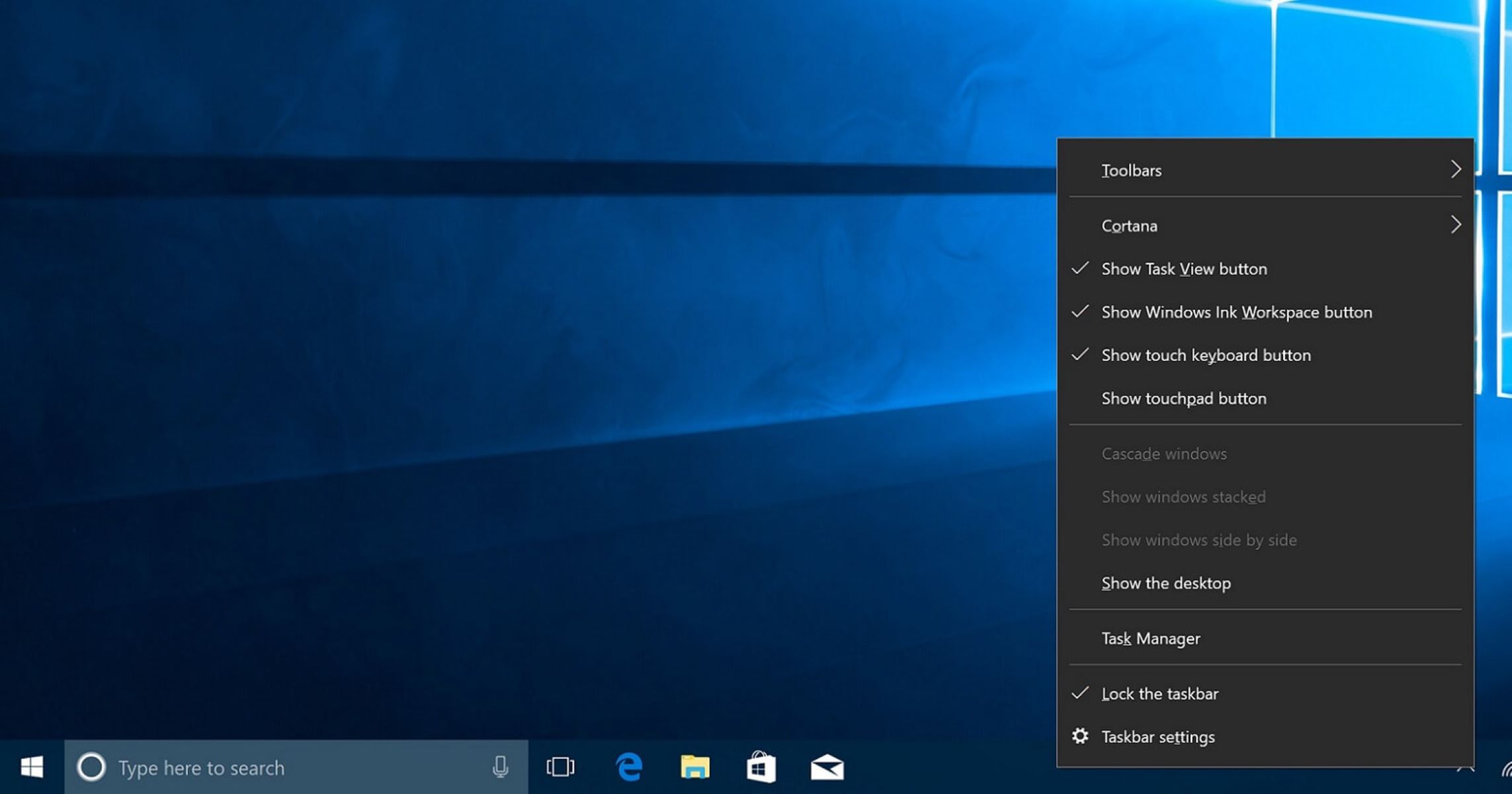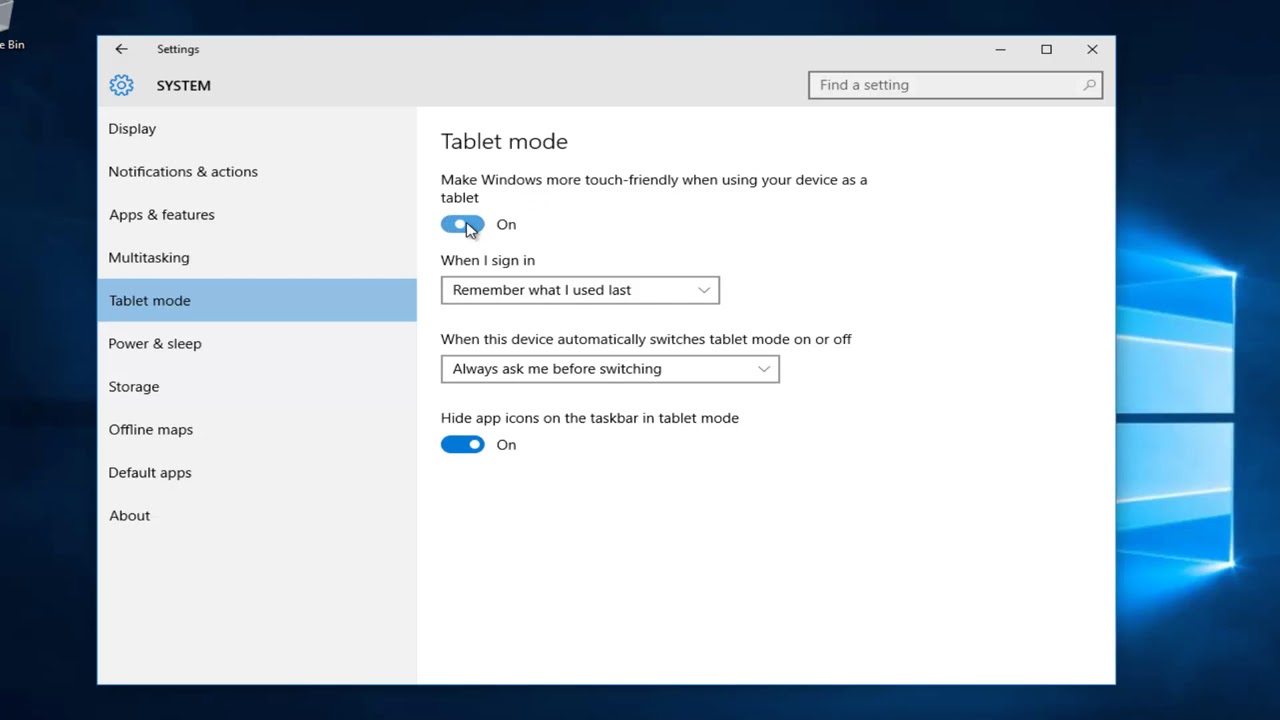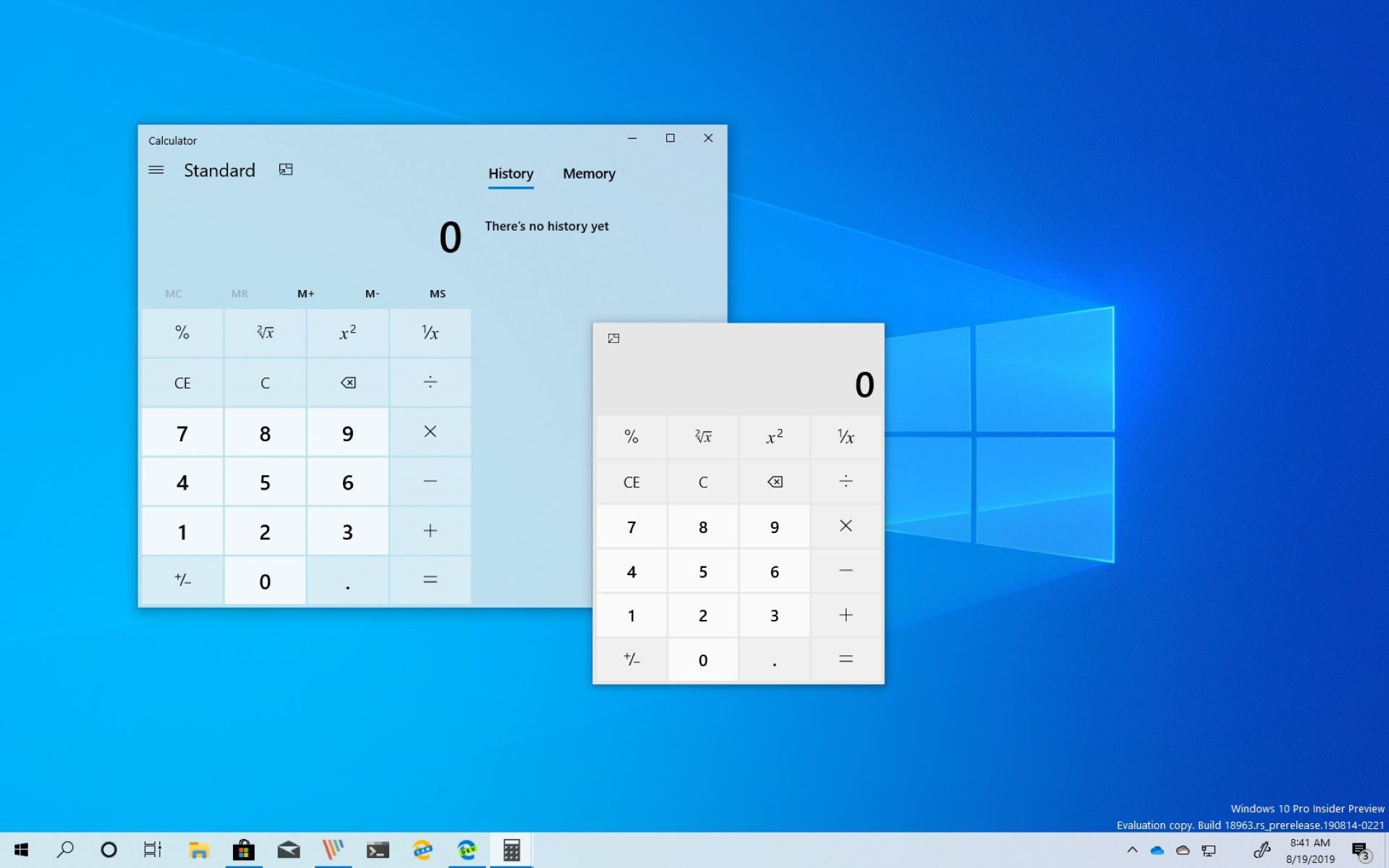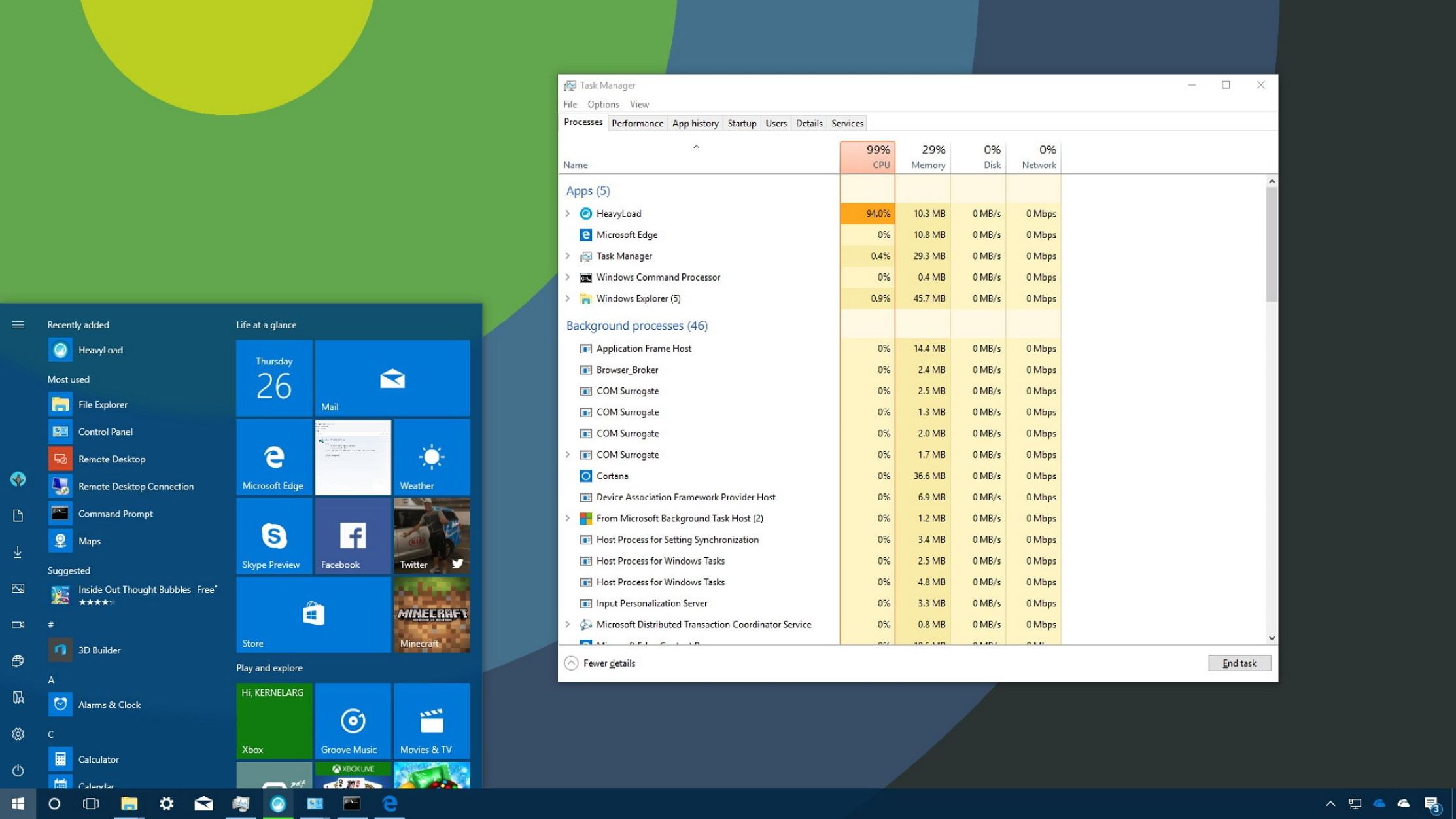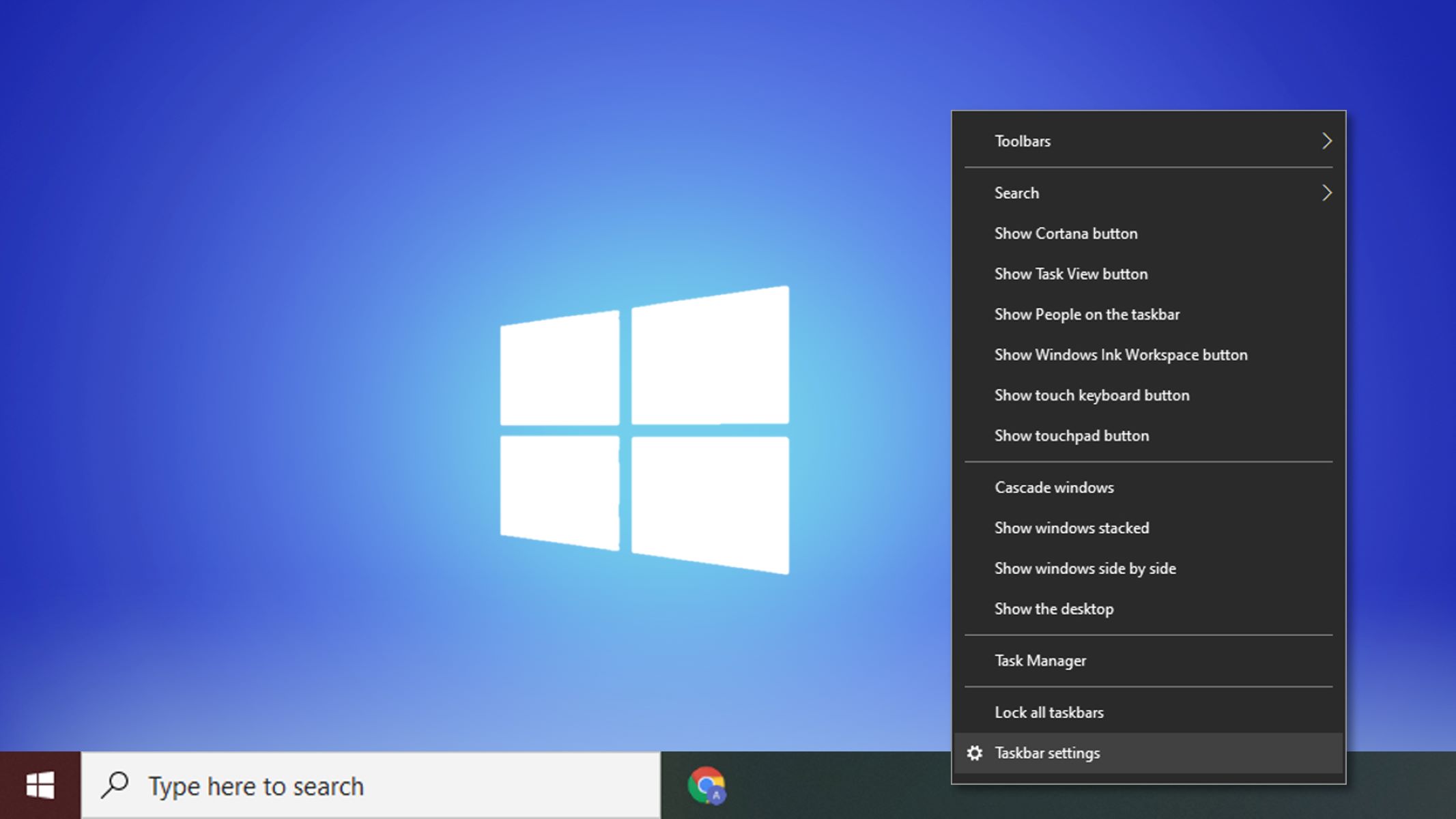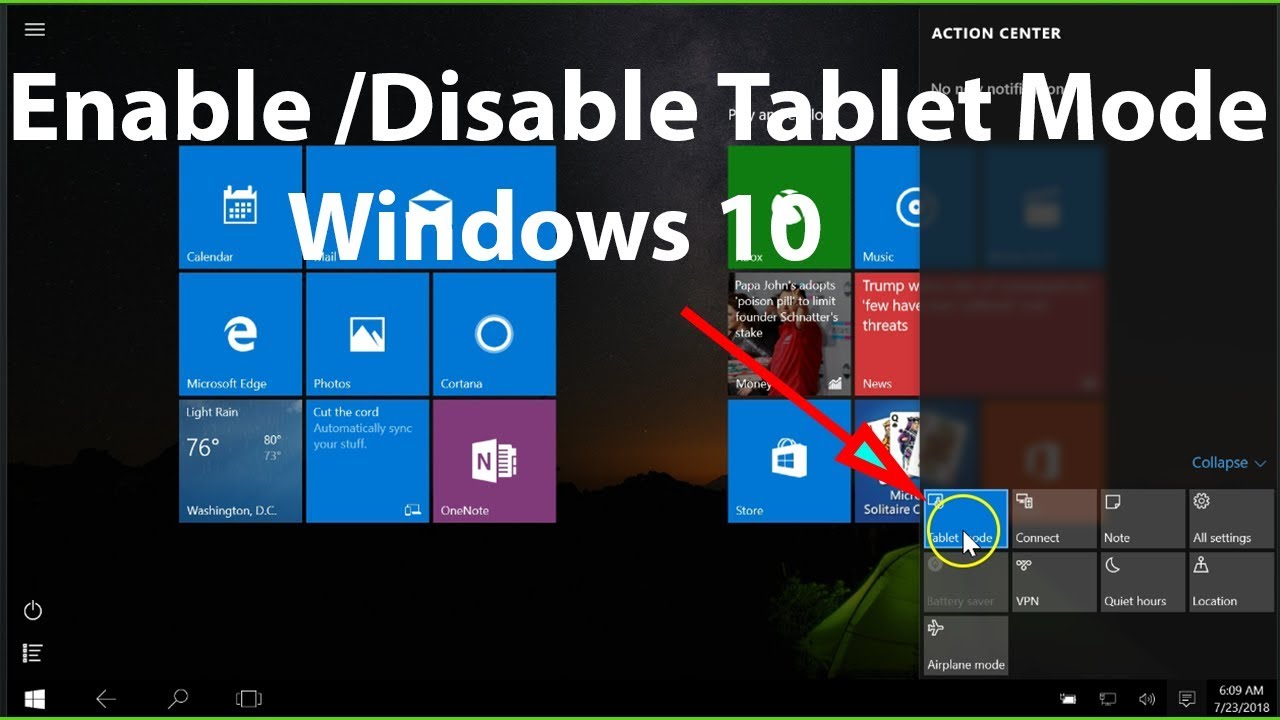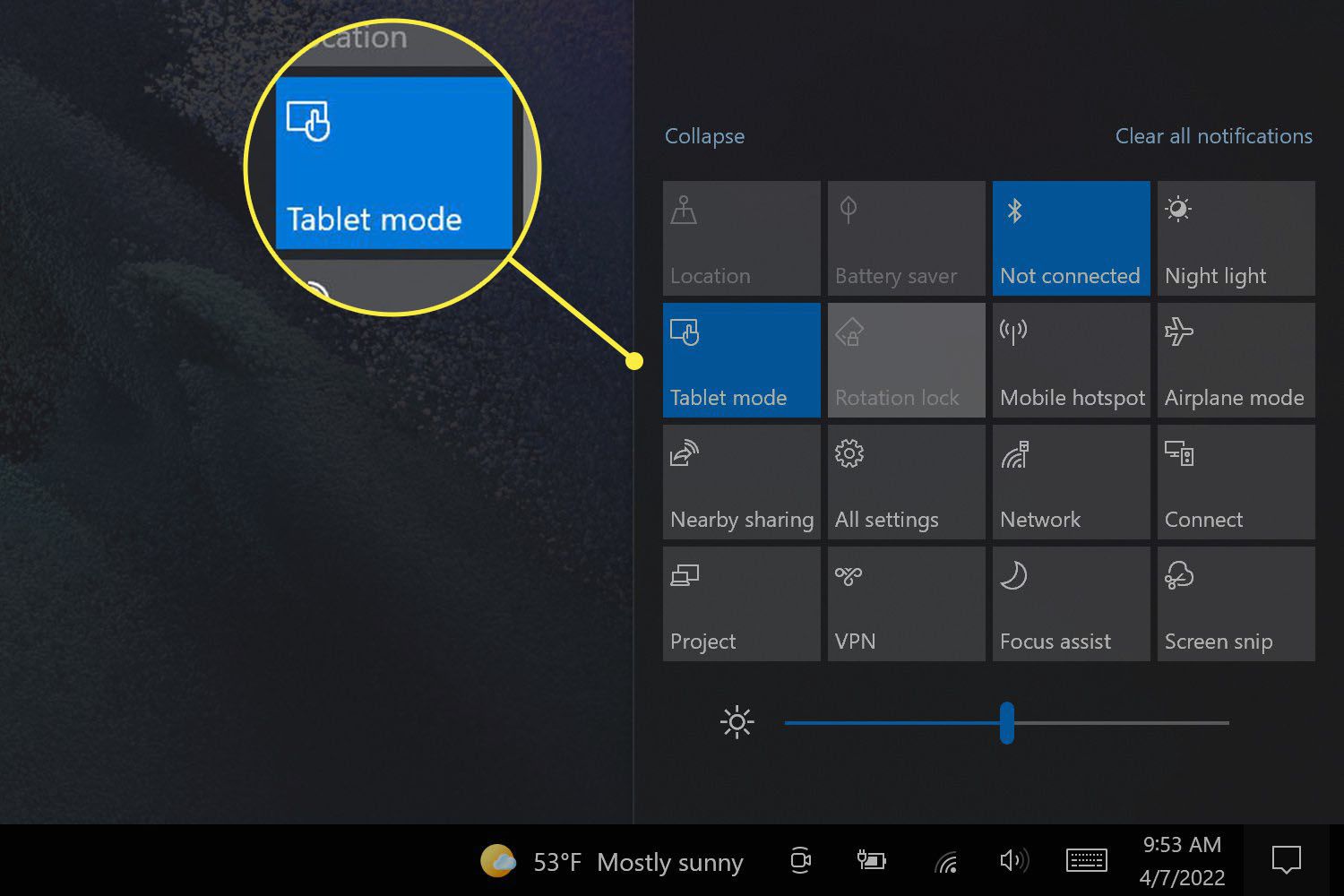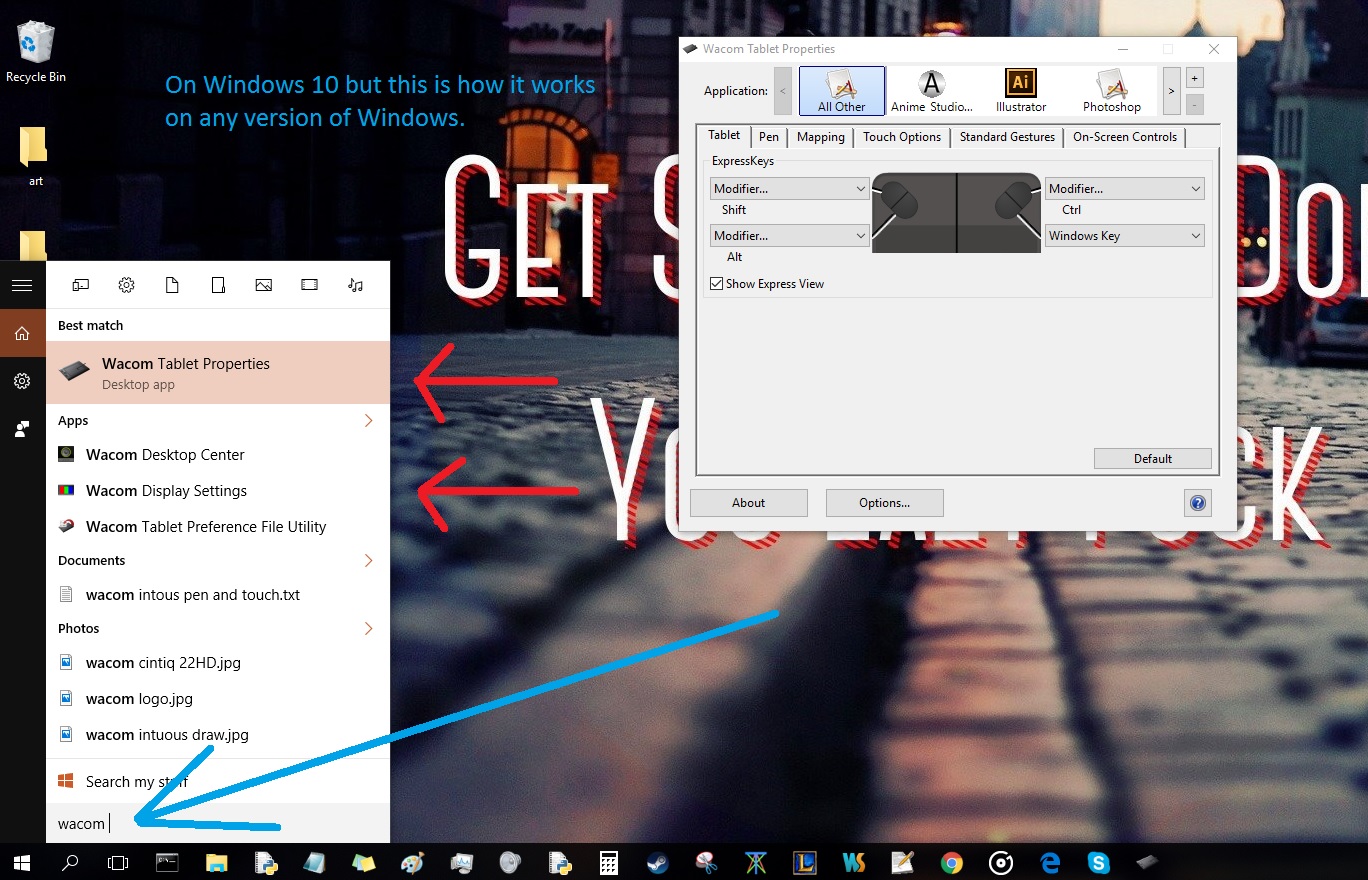Introduction
The taskbar is an essential feature of the Windows operating system, including Windows 10. It serves as a convenient and accessible navigation tool, allowing users to access commonly used applications and features with ease. Whether you are a new Windows 10 user or someone looking to enhance your productivity, understanding how to effectively utilize the taskbar is crucial.
In this article, we will explore the ins and outs of the taskbar in Windows 10. From accessing it to customizing its appearance and functionality, we will cover everything you need to know to make the most out of this powerful tool. Whether you’re searching for a specific application, wanting to pin your favorite programs, or seeking ways to boost your productivity, the taskbar has got you covered.
Throughout this article, we will guide you step-by-step on various aspects of the taskbar, such as accessing it, finding it if it’s hidden, customizing its appearance, moving it to a different location, changing settings, and adding or removing icons. Additionally, we will offer some helpful tips and tricks to enhance your taskbar experience.
So, if you’re ready to take control of your Windows 10 taskbar and streamline your workflow, let’s dive in and explore all the features and functionalities it has to offer.
What Is the Taskbar?
The taskbar is a fundamental component of the Windows operating system that provides quick access to various applications, features, and system controls. It is located at the bottom of the screen by default, but can be customized to appear on the left, right, or top of the screen according to your preference.
At its core, the taskbar serves as a central hub for launching and switching between open programs. It displays icons for all currently running applications, allowing you to easily switch between them with a single click. By clicking on an icon, you can bring the corresponding application to the forefront of your screen.
In addition to launching and switching between programs, the taskbar also houses a range of system features and controls. These include the Start button, which opens the Start menu, providing access to a wealth of applications and system settings. The taskbar also contains the system tray on the right-hand side, where you can find the clock, Wi-Fi or network status, and other important notifications.
One of the most convenient aspects of the taskbar is its ability to “pin” frequently used applications. When you pin an application to the taskbar, its icon remains permanently visible, even when the program is not currently running. This allows you to quickly launch your preferred applications without searching through the Start menu or desktop.
The taskbar can also be customized to suit your preferences and workflow. You can resize it, change its position, auto-hide it to free up screen space, and even personalize its appearance by changing the color or adding transparency.
In essence, the taskbar acts as your digital command center, providing easy access to essential programs and system functionalities. Whether you are a casual user or a power user, understanding how to utilize the taskbar effectively can greatly enhance your Windows 10 experience and make navigating your computer a breeze.
How to Access the Taskbar in Windows 10
Accessing the taskbar in Windows 10 is a simple process. By default, it is always visible at the bottom of the screen, but in some cases, it may be hidden or auto-hide mode might be enabled. Here are a few ways to access the taskbar:
- Hover your Mouse: Move your mouse cursor to the bottom edge of the screen. The taskbar should automatically appear if it was hidden or in auto-hide mode.
- Windows Key: Press the Windows key on your keyboard. This will open the Start menu, and the taskbar will be visible at the bottom of the screen.
- Ctrl + Esc: If you don’t have a Windows key on your keyboard, you can use the Ctrl + Esc shortcut to open the Start menu and access the taskbar.
Once the taskbar is visible, you can start using its various features and functionalities:
- Opening Applications: Simply click on the icon of an application on the taskbar to open it. If the application is already open, clicking on the icon will bring that window to the forefront.
- Switching Between Applications: If multiple applications are open, you can switch between them by clicking on their respective icons on the taskbar.
- Pinning Applications: If there is a specific application that you use frequently, you can pin it to the taskbar for easy access. To do this, right-click on the application’s icon and select “Pin to taskbar.”
It is worth noting that the taskbar can be customized to better suit your needs. To access the taskbar settings, right-click on an empty area of the taskbar and select “Taskbar settings.” Here, you can modify options such as its position, size, visibility, and more.
By familiarizing yourself with these simple methods of accessing the taskbar and utilizing its features, you can navigate Windows 10 with ease and efficiency. Whether you’re searching for an application or need to switch between different windows, the taskbar is your go-to tool to streamline your workflow.
Finding the Taskbar if It’s Hidden
Sometimes, you may find that the taskbar in Windows 10 is not visible because it is either hidden or set to auto-hide mode. If you’re unable to see the taskbar on your screen, don’t worry – there are a few methods to locate and bring it back:
- Hover the Mouse: Move your mouse cursor to the bottom edge of the screen. If the taskbar is hidden, it should reappear as soon as you hover over that area.
- Press the Windows Key: Press the Windows key on your keyboard to open the Start menu. The taskbar should become visible when the Start menu opens.
- Use the Taskbar Settings: If the above methods don’t work, you can access the taskbar settings to check if it is set to auto-hide mode. Right-click on an empty area of the taskbar and select “Taskbar settings.” In the settings window, toggle off the “Automatically hide the taskbar in desktop mode” option.
- Restart Explorer: In some cases, a temporary glitch or error may be causing the taskbar to disappear. To resolve this, you can restart the Windows Explorer process. Right-click on the taskbar, select “Task Manager,” find the “Windows Explorer” process, right-click on it, and choose “Restart.” This will refresh the taskbar and bring it back to visibility.
If none of the above methods work, it is possible that the taskbar settings on your computer may be modified or there could be a more significant issue. In such cases, you may need to troubleshoot or seek assistance from a technical expert.
Remember, the taskbar plays a crucial role in navigating and accessing various features and applications on your Windows 10 system. If you’re unable to find it, follow the steps outlined above to restore its visibility and continue using it to enhance your productivity and streamline your workflow.
Customizing the Taskbar
The taskbar in Windows 10 can be customized to suit your preferences and enhance your overall user experience. From changing its appearance to adjusting its functionality, here are some ways you can customize the taskbar:
- Resizing the Taskbar: To resize the taskbar, hover your mouse over the edge of the taskbar until the cursor changes to a double-headed arrow. Then, click and drag the edge of the taskbar to make it taller or shorter.
- Changing the Taskbar Position: By default, the taskbar is located at the bottom of the screen, but you can move it to other edges. To do this, right-click on an empty area of the taskbar, go to “Taskbar settings,” and under the “Taskbar location on screen” section, choose the desired position.
- Enabling Auto-Hide: If you want to save screen space, you can enable the auto-hide feature. With this enabled, the taskbar will only appear when you hover over the edge of the screen. To enable auto-hide, right-click on an empty area of the taskbar, go to “Taskbar settings,” and toggle on the “Automatically hide the taskbar in desktop mode” option.
- Customizing the Taskbar Colors: You can personalize the appearance of the taskbar by changing its color. Right-click on an empty area of the taskbar, go to “Taskbar settings,” and under the “Taskbar color” section, choose a preset color or enable the “Automatically pick an accent color from my background” option to have it automatically match your desktop background.
- Adding Toolbars: You can add custom toolbars to the taskbar for quick access to folders or shortcuts. Right-click on an empty area of the taskbar, go to “Toolbars,” and select “New toolbar.” Choose the folder or location you want to add as a toolbar, and it will appear on the taskbar.
These are just a few examples of the customization options available for the taskbar in Windows 10. You can explore the “Taskbar settings” to discover more features and options, such as managing notifications, choosing which icons appear on the taskbar, and customizing the system tray.
By customizing the taskbar to your liking, you can improve your productivity and make it easier to access your most frequently used tools and applications. Whether you prefer a minimalistic setup or a feature-rich taskbar, the customization options in Windows 10 allow you to create a personalized computing environment.
Moving the Taskbar
The taskbar in Windows 10 is a versatile feature that can be moved to different edges of the screen according to your preference. By changing its position, you can optimize your workspace and enhance your overall user experience. Here’s how you can move the taskbar:
- Click and Drag: The simplest way to move the taskbar is to click on an empty area of the taskbar and hold the mouse button down. While keeping the mouse button pressed, drag the taskbar to the desired edge of the screen. Once you have reached the desired position, release the mouse button, and the taskbar will stay in place.
- Using the Taskbar Settings: Another method to move the taskbar is through the taskbar settings. Right-click on an empty area of the taskbar, select “Taskbar settings,” and under the “Taskbar location on screen” section, choose the desired position from the drop-down menu. You can select from the bottom, left, right, or top.
By default, the taskbar is located at the bottom of the screen, but moving it to other edges can be beneficial depending on your workflow and screen setup. For example, if you have a widescreen monitor with a lot of horizontal space, you may find it more convenient to move the taskbar to the left or right edge, allowing you to have more vertical space for your open windows.
It’s worth noting that when you move the taskbar to a different edge, the position of the Start button and system tray icons also change accordingly. Thus, you may need to adjust your familiarity with the new layout initially. However, using the taskbar in a position that feels most comfortable to you can lead to a more efficient and user-friendly desktop experience.
Remember that you can always experiment with different taskbar positions to find the one that best suits your workflow and preferences. Whether you prefer the traditional bottom placement or opt for a different edge, the ability to move the taskbar in Windows 10 allows you to customize your desktop environment and maximize your productivity.
Changing Taskbar Settings
The taskbar in Windows 10 comes with a range of settings that can be adjusted to customize its appearance and functionality. By accessing the taskbar settings, you can personalize the taskbar to suit your preferences and optimize your workflow. Here’s how you can change the taskbar settings:
- Right-click on Taskbar: Begin by right-clicking on an empty area of the taskbar. This will open a context menu with various options.
- Select “Taskbar settings”: From the context menu, select the “Taskbar settings” option. This will open the taskbar settings window.
- Explore Taskbar Settings: In the taskbar settings window, you will find several options to customize the taskbar:
- Lock the taskbar: Toggle this option on or off to lock or unlock the taskbar, preventing accidental changes to its position or size.
- Taskbar location on screen: Choose the desired position for the taskbar from the drop-down menu. Options include the bottom, left, right, and top.
- Automatically hide the taskbar in desktop mode: Enable this option to automatically hide the taskbar when it’s not in use. This allows you to maximize your screen space.
- Use small taskbar buttons: Toggle this option on or off to switch between small or regular-sized icons on the taskbar.
- Show badges on taskbar buttons: Enable this option to display badges or notifications on app icons in the taskbar when there is new activity.
- Taskbar color: Choose a preset color to customize the taskbar’s appearance or select the “Automatically pick an accent color from my background” option to match it to your desktop background.
These are just a few examples of the taskbar settings available in Windows 10. Feel free to explore the various options and experiment with different combinations to create a taskbar setup that suits your needs and preferences.
By changing taskbar settings, you can personalize the visual aspect of your taskbar, position it to your liking, choose icon sizes, enable auto-hide if preferred, and enhance your overall desktop experience. Customizing the taskbar settings allows you to optimize your workflow and make the most out of the valuable screen real estate on your Windows 10 system.
Adding and Removing Icons on the Taskbar
The taskbar in Windows 10 allows you to customize the icons it displays, giving you quick access to your most frequently used applications and tools. Whether you want to add new icons or remove existing ones, here’s how you can manage the icons on the taskbar:
Adding Icons to the Taskbar:
- Pinning Applications: To add an application to the taskbar, simply locate the program in the Start menu or in the search bar. Right-click on the desired application and select “Pin to taskbar.” The application’s icon will now appear on the taskbar for easy access.
- Dragging and Dropping: You can also add icons to the taskbar by dragging and dropping them directly onto it. Locate the application or shortcut on your desktop or in the File Explorer, click and hold the icon, and then drag it onto the desired location on the taskbar. Release the mouse button, and the icon will be added to the taskbar.
Removing Icons from the Taskbar:
- Unpinning Applications: To remove an icon from the taskbar, simply right-click on the application’s icon and select “Unpin from taskbar.” The icon will be removed from the taskbar, but the application itself will remain on your system.
- Dragging and Removing: Another way to remove icons from the taskbar is by dragging and removing them. Click and hold the icon you want to remove, drag it off the taskbar, and then release the mouse button. The icon will be removed from the taskbar.
Customizing the icons on your taskbar allows you to have easy access to your preferred applications and tools, helping you streamline your workflow and increase productivity. You can add or remove icons according to your needs and preferences, making the taskbar a personalized and efficient navigation tool.
Keep in mind that the icons on the taskbar can be rearranged by clicking and dragging them to different positions. This helps you organize your most frequently used applications in a way that makes sense to you, further optimizing your productivity.
Whether you want to add your favorite applications for quick access or remove unnecessary icons to declutter the taskbar, managing the icons on the taskbar is a simple and effective way to customize your Windows 10 experience.
Taskbar Tips and Tricks
The taskbar in Windows 10 is a powerful tool that goes beyond basic navigation and application launching. Here are some tips and tricks to help you make the most out of your taskbar:
- Quickly Accessing Taskbar Icons: To quickly access icons on the taskbar, use the keyboard shortcut Windows key + [number]. This will open the corresponding application or switch to the open window associated with that position on the taskbar. For example, Windows key + 1 will open the first pinned application on the taskbar.
- Taskbar Previews: Hovering over an application icon on the taskbar displays a thumbnail preview of the open windows associated with that application. You can quickly preview and switch to a specific window by hovering over the thumbnail and selecting the desired window.
- Jump Lists: Right-clicking on an application icon on the taskbar reveals a jump list. Jump lists provide quick access to recent documents, frequently accessed functions, or specific actions related to that application. Utilize jump lists to save time and access the most used features of an application directly from the taskbar.
- Taskbar Keyboard Shortcuts: The taskbar supports various keyboard shortcuts to improve productivity. For example, Windows key + T allows you to cycle through the applications on the taskbar, and Windows key + B focuses on the system tray area, allowing you to navigate its icons using the arrow keys.
- Notification Area Customization: Customize the notification area (system tray) on the taskbar by right-clicking on an empty area, selecting “Taskbar settings,” and clicking on “Select which icons appear on the taskbar.” From there, you can choose which icons should be visible or hidden in the system tray.
- Taskbar on Multiple Displays: If you have multiple displays, you can choose to have the taskbar appear on all screens or only on the primary display. To customize this, right-click on an empty area of the taskbar, select “Taskbar settings,” and under the “Multiple displays” section, toggle the desired option.
By utilizing these taskbar tips and tricks, you can enhance your workflow, save time, and navigate your system more efficiently. The taskbar in Windows 10 is a versatile tool designed to improve productivity, and exploring its hidden features and shortcuts can greatly enhance your overall user experience.
Experiment with these tips and tricks to find the methods that work best for you and make the taskbar a powerful ally in your day-to-day computer activities.
Conclusion
The taskbar in Windows 10 is an essential tool that plays a vital role in navigating and accessing various applications and features on your computer. By utilizing its features and customizing its settings, you can enhance your productivity, streamline your workflow, and personalize your computing experience.
In this article, we discussed the basics of the taskbar, including what it is and how to access it. We also explored various aspects of the taskbar, such as customizing its appearance, moving it to different positions on the screen, and changing its settings to suit your preferences.
We learned how to add and remove icons on the taskbar, allowing you to have quick and easy access to your favorite applications and tools. We also shared some handy tips and tricks to maximize the functionality of the taskbar, such as using keyboard shortcuts, utilizing jump lists, and customizing the notification area.
By taking advantage of the taskbar features and employing these tips and tricks, you can optimize your workflow and streamline your computer usage. The taskbar empowers you to work more efficiently and access your most frequently used applications and resources with ease.
So, whether you’re a casual user or a power user, seize the opportunity to explore and customize the taskbar in Windows 10. Tailor it to your preferences, arrange it to match your workflow, and make the taskbar an invaluable asset in your digital toolkit.
Remember, the taskbar is not just a static element on your screen; it’s a dynamic and customizable tool that can greatly enhance your Windows 10 experience. So go ahead and make the most out of your taskbar, and take control of your computing environment.







